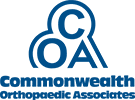The elbow is responsible for the manipulation of the arm and functions much like a hinge. As with any joint, the elbow is comprised of intersecting bones that are held in place by muscles, ligaments, and tendons. This architecture is prone to wear and tear and also vulnerable to acute injury. As the elbow is essential to most daily tasks, an injury in this area can be a major inconvenience.
The most common elbow problems are caused by aging or overuse, rather than trauma. Although traumatic elbow injuries can be an issue for athletes and people that work in jobs that require extensive lifting or risk of falling down. We’ll take a look at the most common elbow ailments and treatments below.
Lateral Epicondylitis
This condition is often referred to as “tennis elbow,” but it does not only result from playing tennis. Any time the elbow is twisted in a weight-bearing capacity on a regular basis, this condition can present. Activities such as golf, weight lifting, pitching a baseball, or chopping wood, if repeated frequently enough, can result in inflammation. These types of injuries are often referred to as “repetitive motion disorders” because the continued activity stresses the tendons in the joint beyond their normal capacity. Treatments for tennis elbow include physical therapy, steroids—in both injection and pill form—and simply refraining the activity that causes irritation, if possible.
Ulnar Nerve
The ulnar nerve threads through the hinge at the outside of the elbow and is, thus, vulnerable to injury. This nerve is what is responsible for the tingling sensation when a person hits their “funny bone.” It can be injured from impact or from consistent pressure, for example resting one’s head on the elbow for extended periods. The most usual presentation of an ulnar nerve injury is numbness in the pinkie and ring fingers. Treatment usually involves preventative measures and braces, but more severe cases may call for surgery.
Bursitis
This condition most often presents as a swollen and painful elbow. This occurs when the cushion at the hinge of the joint becomes inflamed, which can also lead to infection. This condition decreases mobility and may result from other underlying problems, such as diabetes, arthritis, or thyroid conditions. The most common treatment involves antibiotics and the removal of fluid via needle aspiration. More involved cases may result in surgery.
Dislocation
While not common, elbow dislocations can and do occur, most frequently in athletes or unlucky people who take a fall. What essentially happens is that the force from the impact dislodges the bones that intersect at the hinge joint, possibly doing damage to the connecting tendons in the process. This type of injury would be readily apparent and considered an emergency. Doctors remedy this by, first, reconfiguring the joint to its normal position and, later, supporting it with braces. This reconfiguration can be as simple as a manual resetting or may require surgery. It may be necessary to continue with physical therapy to strengthen the mechanisms (whether tendons or the joint, itself) that have been injured in the accident.
Biceps Tendon Tear at the Elbow
The biceps muscle is located in the front of your upper arm. It is attached to the bones of the shoulder and elbow by tendons — strong cords of fibrous tissues that attach muscles to bones.
Tears of the biceps tendon at the elbow are uncommon. They are most often caused by a sudden injury and tend to result in greater arm weakness than injuries to the biceps tendon at the shoulder. Once torn, the biceps tendon at the elbow will not grow back to the bone and heal. Other arm muscles make it possible to bend the elbow fairly well without the biceps tendon. However, they cannot fulfill all the functions of the elbow, especially the motion of rotating the forearm from palm down to palm up.
As with any medical matter, there are, of course, other problems that can present in the elbow. This summary just serves as an overview of the most common. At Commonwealth Orthopaedic Associates, we’ll offer thorough consultation and dedicated treatment for any elbow related problem.
